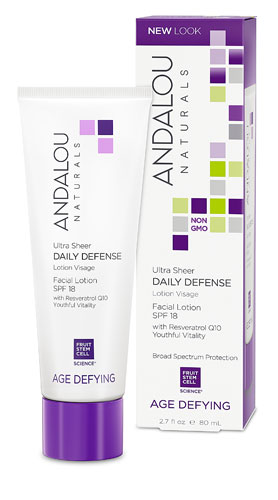It isn’t just the thermometer that feels the force of winter: from brittle nails to that persistent cough, colder temps can wreak havoc on our health and appearance—and our skin takes one of the most significant hits. As our body’s largest organ, it’s susceptible to changes in the weather, and the chillier, windier and rainier our environs, the more our complexions become vulnerable to parched, tight, dry skin, itchy flaking and even the onset of acne or rosacea.
This we know from having lived, but what’s the why behind it—and how can we reclaim our radiance?
Why winter is one of our skin's biggest foes
As Ross Zelster, chief resident in the School of Medicine dermatology department at Boston University/Tufts Residency Program says, skin in cold climates “becomes dehydrated, causing it to lose some of its protective barrier properties.” Factor in lower humidity levels and brutal elements, and you have the perfect recipe for what Zelster claims are the most common winter-complexion complaints: irritation, inflammation, redness, burning, itching, scaliness and cracking.
“When the air outside is cold and dry,” Everyday Health reports, “the water in your skin evaporates more quickly; this makes your skin feel dry and tight, and makes it look flaky. In fact, your skin loses more than 25 percent of its ability to hold moisture in the winter. Windy weather—especially if you enjoy winter sports—can also beat down on your skin and make it look and feel dry and chapped.”
While we can’t beat Mother Nature, we can take steps towards defending our skin from the frigid weather.
How to combat winter's assault and get glowing again
1. Lather it on
“Moisturizing is key,” Zelster says, in that they work as a shield against the chill (and its moisture-zapped air) by trapping water within the skin and keeping it hydrated. Aside from ensuring that your hands are nourished throughout the day—those, too, see the effects of frosty temps—dermatologists also recommend applying moisturizer to your face right after cleansing. “Immediately after a bath or shower, your skin acts like a sponge and this is the best time to apply moisturizer,” Dr. Gervaise Gestner—a New York City-based dermatologist—says. Bonus tip: Apply oil before your moisturizer to lock in extra hydration.
2. Choose with care
The type of moisturizer you use is also critical when the mercury drops. Swapping your light summer cream for something thicker and heavier will provide an added layer of protection between your skin and the bitter weather. Be sure to select a moisturizer that’s chemical-free—additives like paraben and perfume can do a number on both your health and your appearance—and search for products that include ingredients like borage oil, linoleic acid, shea butter, safflower oil and ceramides.
3. Get cozy
Don’t reserve skin protection to moisturizer, either: When freezing temps hit our exposed cheeks, it’s akin to a slap, dermatologist Renee Rouleau explains. Can’t stay inside when the next ice storm hits? Apply a protective balm and wrap your face in a soft scarf before heading outdoors.
4. Exfoliate smartly
Chances are you’ve heard that exfoliating preps your skin for deeper penetration of your moisturizer, making the urge to scrub more deeply felt during the winter season. And while it’s true that sloughing off dead skin cells can lead to a brighter, clearer, more gorgeous complexion, harsh exfoliants—and scrubbing too often—can “damage the skin’s protective barrier,” reports Miami-based dermatologist Frederic Brandt. A smarter, kinder approach? Using a gentle exfoliant weekly, followed by a cream containing those aforementioned ceramides.
5. Blow better
One of the telltale signs winter has hit is the prevalence of red noses on the streets. (Rudolph earned his nickname for a reason.) Why? Cold weather “stimulates mucous production in an effort to keep your nose moisturized, so your nostrils easily flare up,” Refinery29 explains. Consistently reach for tissues and all the makeup in the world won’t be able to hide the irritation under your muzzle. Tissue that works double-duty as a moisturizer is readily available; stock up before the first cold spell arrives.
6. Sultri-fy your home
Balmy weather might be something of the past—August can feel like eons ago in December—but letting your skin breathe in sultry air needn’t require a red-eye to Bermuda. In other words, invest in a humidifier, which will help restore lost moisture. Better yet? Place it near your bed: The lion’s share of skin rejuvenation happens during R.E.M.
7. Outsmart the (albeit hidden) sun
The idea of getting sunburned on a day that requires long john underwear might seem unfathomable—if not wishful thinking—but wearing sun protection throughout the winter is vital. This is especially true if you’re on the ski slopes, where the sun’s potentially-damaging effects intensify “by reflecting the sunlight on the ground back up to your face,” Prevention reports.
8. Eat wisely
“Food is nutrition” may seem overplayed but it’s often bandied about for a reason: Eating well is one of the shrewdest strategies for maintaining a radiant complexion. “Food provides essential vitamins, minerals, and nutrients which the skin cells need to regenerate and grow,” holistic dermatologist and author of Smart Medicine For Your Skin Dr. Jeanette Jacknin says.
While the selection of fresh fruit and veggies may seem sparser during the winter months, it’s imperative to seek them out. Winter gems like kale, sweet potatoes, pomegranates and oranges are all packed with skin-boosting antioxidants, while eggs, sunflower seeds, salmon and walnuts are rich in Omega-3s—one of the keys to keeping your skin smooth and supple. And if a craving for cocoa strikes some winter night, give into the indulgence--as long as it's made with 65% dark chocolate, which contains skin-nourishing Iron, calcium and vitamins A, B1, C, D and .




